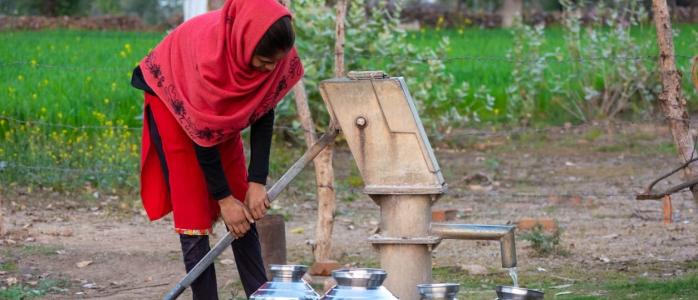



Recently, the Government of India prepared a rejuvenation plan for 13 rivers through forestry interventions in their catchment and allocated INR 19,000 crore for the project over the next five years. The approach appears similar to the watershed management programmes undertaken in the past. With the water demand in India estimated to increase by almost 70 per cent by 2050 compared to 2010 levels, other related issues need attention for reducing water stress experienced in the river basins.
The Constitution of India has put water largely in the hands of states and the centre's role is confined to the development of inter-state river basins. Each state plans for water resources development within its territory without engaging with other riparian states. This arrangement puts the lower riparian states at a disadvantage and they often complain about water stress in their part of the river basin due to the over appropriation of water resources in the upstream areas. Against this backdrop, here are some suggestions for better planning of water resource management in India.
First, accelerate the adoption of the National Water Framework law. Though the bill for the same was finalized in 2016, it is yet to see the light of day. The bill aims for the development and management of the river basins in an integrated manner to provide an equitable share of water to each riparian State. For this purpose, it proposes to establish river basin authority for each inter-state river basin. Once passed, this law will be instrumental in inducing a shift towards basin-scale planning and management of water resources, thereby playing an important role in resolving inter-state water disputes. Also, it will replace the archaic ‘River Boards Act, 1956’ which has remained largely ineffective as no state ever requested creating the board to develop inter-state rivers.
Second, improve functioning of the prospective river basin authority. It is suggested that for a comprehensive assessment of the key water challenges in a particular basin, the river basin authority should have representatives from the water and allied agencies. It should also include representation from other related departments (urban, agriculture, industries, environment, etc.), policy and research institutions, and grassroots organizations working directly with the end-users.
Third, improve water use efficiency at the field scale by doing away with the free electricity supply to the agriculture sector. Instead, the focus should be on metering farm wells, introducing electricity pricing, and improving electricity supply. Some states such as Gujarat, Rajasthan, Punjab, and Uttarakhand have taken a lead in metering. However, the pricing of electricity for irrigation use is yet to be introduced properly in any of the states. Once done, it will lead to efficient use of both energy and water as farmers will try to optimize their use. Subsidies on the electricity price can be offered to those below the poverty line.

Fourth, reduce pressure on freshwater resources by adopting a national policy on the reuse of treated wastewater (TWW). Some states such as Gujarat and Haryana have already adopted similar policies, but it needs a concerted push from the Centre to get other states onboard as well. Though there is a big drive for infrastructure creation for wastewater treatment, especially in the riparian states of the Ganga river basin, the reuse component is unable to get the desired traction. One of the main reasons is the low demand for treated wastewater. Probably, the need is to incentivize its use by increasing the price of fresh water, especially in the areas that experience water stress. The prospective national TWW reuse policy should consider this.
Fifth, ensure a sustainable domestic water supply. Under the Jal Jeevan Mission, tremendous progress has been achieved in terms of providing rural households with tap connections for drinking water. From a mere 17% of the total 19.3 crore rural households in 2019, now almost 47.5% have tap connections. In urban areas, AMRUT 2.0 envisages covering all the households with the tap connection by 2026. However, a reliable and adequate quantity of water supply remains a distant dream. Presently, about 90% of the water supply schemes in rural areas are based on groundwater. They fail to supply water during summers in areas having consolidated rock formations (2/3rd of India). To address this seasonal water stress, such schemes need to be supplemented by surface water-based sources. Further, as many rural households have demands other than the domestic needs (for example for the kitchen garden, livestock keeping, etc.), the daily water supply norm (which is 40-55 litres per person) needs to be revised keeping in view the socio-economic, cultural, and climate variables affecting their water demand.
The suggested approaches, if adopted, could play an important role in addressing water stress through judicious allocation of basin water resources and promote efficient use of both water and energy in the farm sector. Further, it will help reduce pressure on freshwater resources and make domestic water supply reliable.
Nitin Bassi is a Programme Lead at the Council on Energy, Environment and Water (CEEW), an independent not-for-profit policy research institution. Send your comments to [email protected]







Add new comment